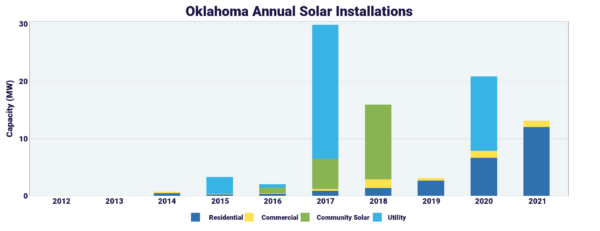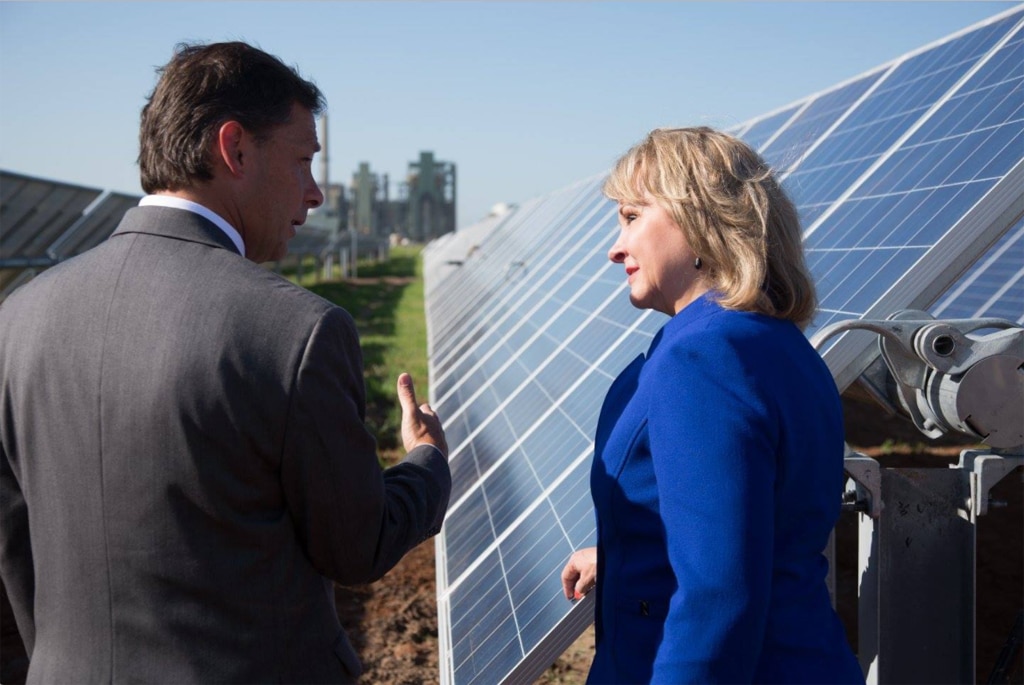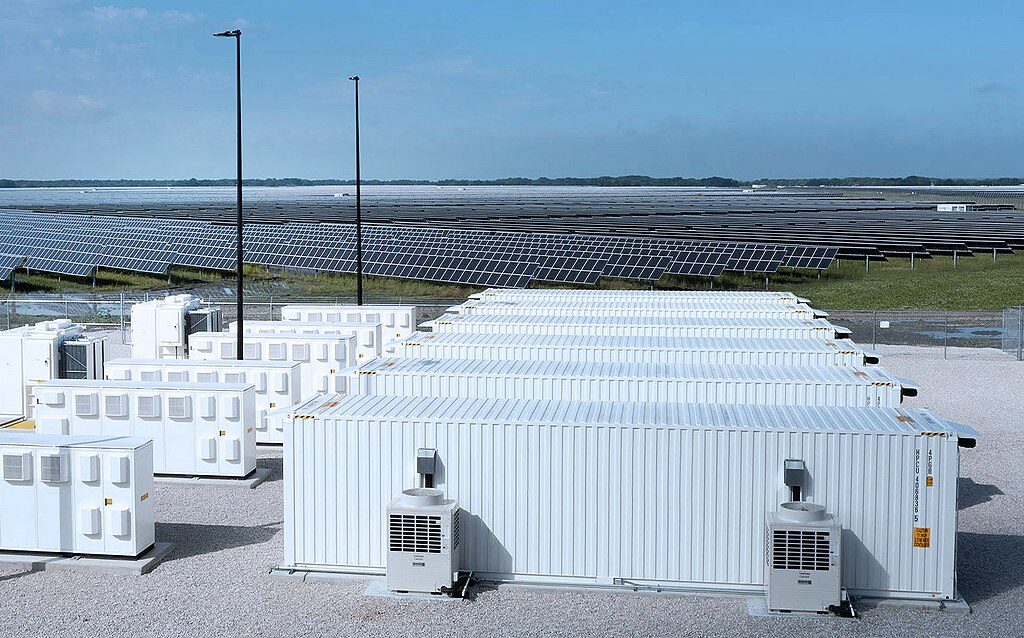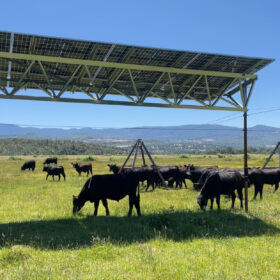Oklahoma is “where the wind goes sweeping down the plains,” with wind energy providing about 24% of the Public Service Company (PSC) of Oklahoma’s energy mix. However, despite strong levels of solar irradiance, the state has not yet matured its solar market, though recent procurement efforts may aid this.
The Solar Energy Industries Association (SEIA) reported that Oklahoma had 100 MW of solar installed through Q2 2022, ranking it in the bottom-five state in terms of capacity. To date, SEIA estimates that 868 people are employed in solar in the state across 26 companies, and $189 million has been invested in the technology.

SEIA’s forecast for Oklahoma’s solar future looks sunnier, as it expects nearly 3 GW of projects to come online in the next five years, ranking it 15th in the state deployment forecast. Prices have fallen 53% in the last 10 years, making solar an ever-more attractive investment in the Sooner State.
Much of Oklahoma’s solar-generated electricity is sourced from out-of-state facilities in the Southwest Power Pool. In 2021 PSC issued request for proposals to solicit bids to buy solar energy resources of up to 1,350 MW and wind energy resources of up to 2,800 MW. Proposals included a battery energy storage system as an option, with the optional storage no larger than 40% of the nameplate solar energy resource, and sized for 4 and/or 8 hours of capacity.
Incentives
There’s not much to be said about solar incentives for home and business owners in Oklahoma. The state does have a net metering requirement for utilities, but the requirement is loose.
Net metering involves the utility paying customers for their excess solar generation sent back to the grid. It helps the utility serve its customers and allows the homeowner to get a better return on investment for purchasing the clean technology.
However, SolarReviews said Oklahoma state law only requires systems 100 kW and below to be offered net metering, but the utility is not required to purchase the excess generation. Customers can request net metered payments, but the decision to pay rests with the utility.
When paid, net metering rates are the low “avoided cost” to the utility of about $0.02 per kWh to $0.03 per kWh, which solar advocates argue is an unfair rate that improperly evaluates the avoided cost to the utility.
Solar-interested Sooners can still benefit from the passage of the Inflation Reduction Act of 2022, which extended the 30% Investment Tax Credit for the next decade. The act allows for direct payment of 30% of eligible system costs, including any attached or standalone home battery systems.
EnergySage reports that Oklahoma’s average installation cost ranges from $11,305 to $15,295. On a cost per watt ($/W) basis, a solar panel installation in Oklahoma ranges in price from $2.26 to $3.06, said EnergySage. When compared to the state’s current electric rates, EnergySage estimates an average return on investment period of about 11 years.
Landmark project
Solar installer EightTwenty, launched in the midst of the coronavirus pandemic, aims to bring more distributed solar to the state, which it views as a relatively untapped market.
Oklahoma is the sixth sunniest state in the nation, and OKC is a top-30 sunniest city, said EightTwenty. Even so, CEO Tony Capucille said there are only 2,500 solar homes, few commercial installations, and only one large-scale project.
EightTwenty created a charitable outreach, called Give Solar, which installed its first project for RestoreOKC, a non-profit restorative justice organization. The array powers a community center and farmer’s market that contains hydroponic facilities for urban vegetable farming, bringing fresh vegetables to a community that struggles with nutritional diversity as a food desert. The company said the solar array is large enough to meet 100% of its energy demand.
The company said it aims to be flexible in its installation techniques, expanding past rooftop solar to also provide ground mounts, pergolas, canopies and carports.
Up next
The last installment of the series was a review of Mississippi, and next we will travel to Arkansas on our 50 states roundup of solar incentives.
This content is protected by copyright and may not be reused. If you want to cooperate with us and would like to reuse some of our content, please contact: editors@pv-magazine.com.









Oklahoma is an OIL state and Politics revolve around OIL. Best solution for rooftop solar is being off grid with your system and buying utility power only when needed.
I have been trying to go solar since March of this year. My HOA in Moore has refused to approve my application. I have been in contact with Senator Darrell Weaver and his Executive Assistant Tonya Lewis about a Solar Access law for Oklahoma and he is working on it and may propose one in January. Would this be something that you all would be willing to help get people to call the Senator and give their support? If so, their phone number is (405) 521-5569.